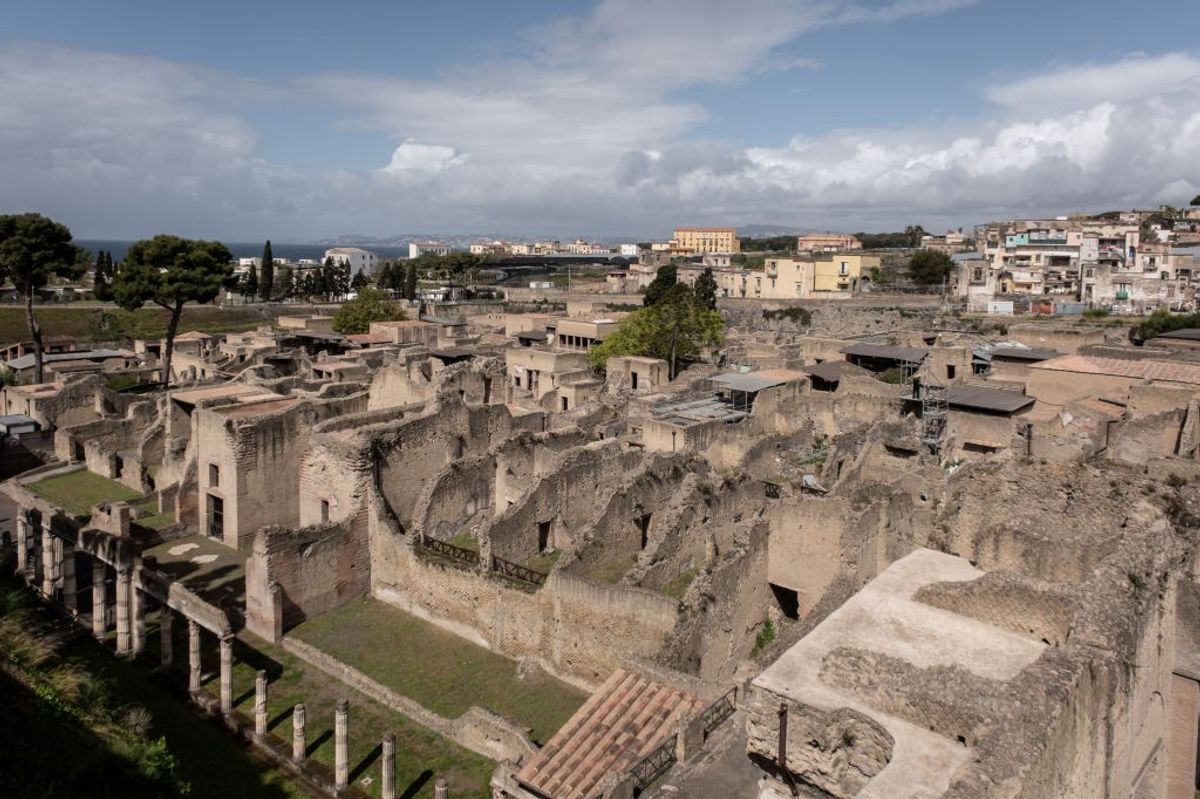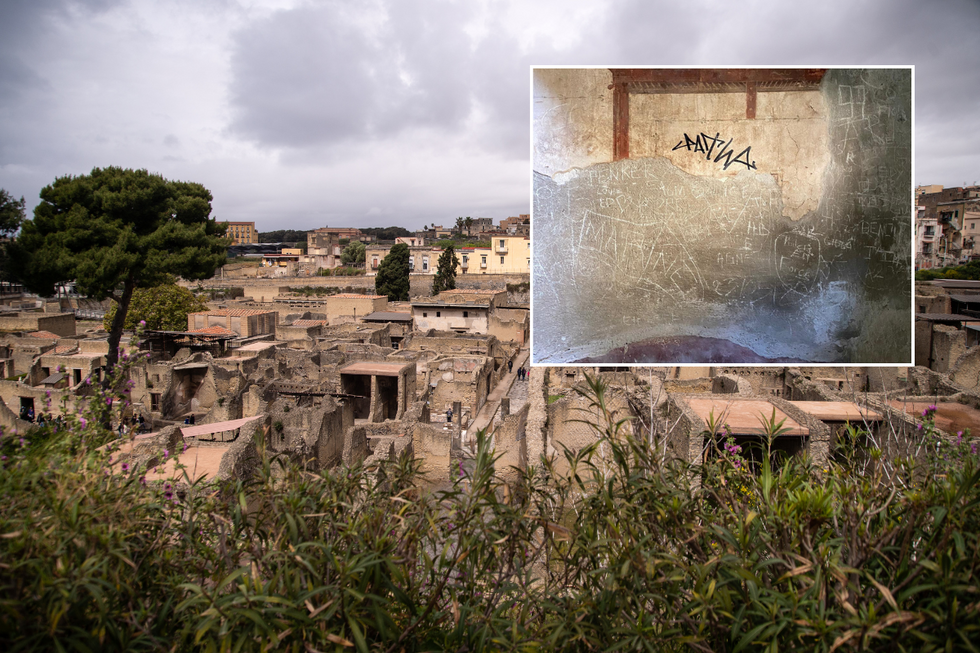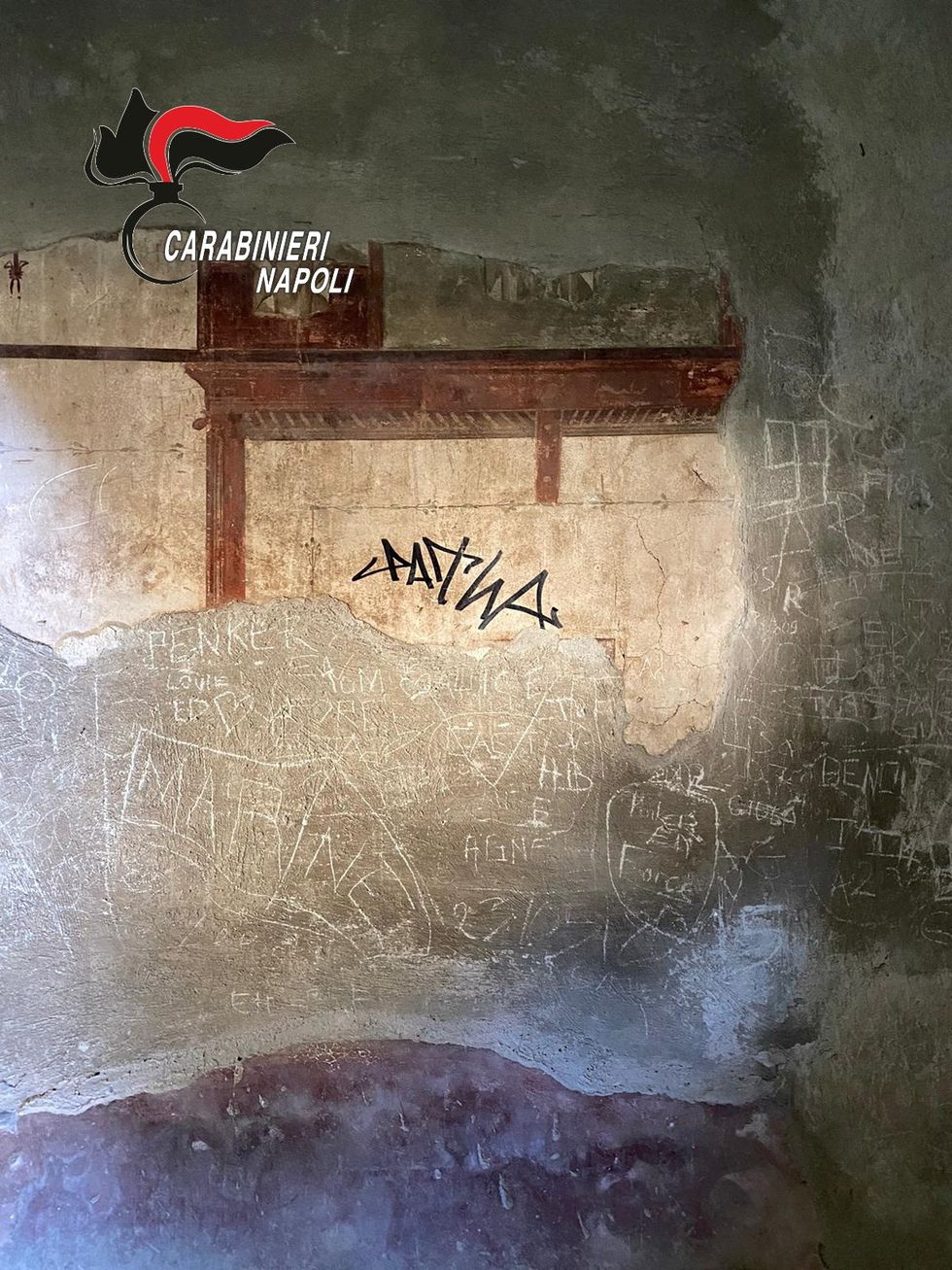
A Dutch tourist has defaced a wall in an ancient Roman house that survived the volcanic eruption of Mount Vesuvius.
Italian police have confirmed the 27-year-old tourist tagged graffiti on a frescoed wall in Herculaneum, near Naples and Pompeii.
The tourist was swiftly identified after staff at the archaeological site discovered graffiti writing made with a black, indelible marker pen on a white section of a painted wall.
Police said the writing was the man's graffiti signature.

Italian Culture Minister Gennaro Sangiuliano said: "Any damage hurts our heritage, our beauty and our identity and that is why it must be punished with the utmost firmness."
The tourist, who was not named, faces charges of damage and defacement of artistic works.
It is not the first time that historical monuments have been vandalised by tourists in Italy. Last year, a visitor from England was caught in a video, posted on social media, scratching his and his girlfriend's name with a key on an internal wall of Rome's Colosseum.
In response to repeated acts of vandalism, Italy this year introduced tougher penalties on those who damage monuments and cultural sites, imposing fines of up to 40,000 euros (£34,035) for those found guilty of defacing monuments.
LATEST DEVELOPMENTS
- Nigel Farage pelted with milkshake as he launches election campaign in Clacton
- Tory candidates ready to DEFECT to Reform UK with just DAYS for Conservatives to find replacements
- Archaeologists discover 1,300-year-old 'giant centipedes' and 'human-like figures'

Herculaneum, a smaller city than its more famous neighbour Pompeii, was buried under a deeper layer of ash, which protected its ruins from thieves and left particularly well-preserved remains.
Earlier this year, a series of papyrus scrolls that were carbonised in the eruption of Mount Vesuvius helped scientists to discover the final resting place of philosopher Plato.
Many scrolls found there have been damaged in attempts to unroll them in the 18th century and today 1,840 fragments are kept at the Victor Emmanuel III National Library in Naples.
Head of the Institute of Heritage Science Costanza Miliani said: "Carbon-based ink was used to write on the scrolls, which were basically themselves turned to carbon by the eruption, making them very difficult to read."

Artificial Intelligence has been used to decode a different set of scrolls which scientists believe to be letters belonging to the family of Julius Caesar.
The collection is also believed to contain thousands of ancient texts, possibly including works by Aeschylus and Sappho.
Four passages have now been deciphered by a trio of students who used AI.
The intelligence enabled students to decipher 15 passages from digital scans of a seared scroll.
from GB News https://ift.tt/R2Jim8e

A Dutch tourist has defaced a wall in an ancient Roman house that survived the volcanic eruption of Mount Vesuvius.
Italian police have confirmed the 27-year-old tourist tagged graffiti on a frescoed wall in Herculaneum, near Naples and Pompeii.
The tourist was swiftly identified after staff at the archaeological site discovered graffiti writing made with a black, indelible marker pen on a white section of a painted wall.
Police said the writing was the man's graffiti signature.

Italian Culture Minister Gennaro Sangiuliano said: "Any damage hurts our heritage, our beauty and our identity and that is why it must be punished with the utmost firmness."
The tourist, who was not named, faces charges of damage and defacement of artistic works.
It is not the first time that historical monuments have been vandalised by tourists in Italy. Last year, a visitor from England was caught in a video, posted on social media, scratching his and his girlfriend's name with a key on an internal wall of Rome's Colosseum.
In response to repeated acts of vandalism, Italy this year introduced tougher penalties on those who damage monuments and cultural sites, imposing fines of up to 40,000 euros (£34,035) for those found guilty of defacing monuments.
LATEST DEVELOPMENTS
- Nigel Farage pelted with milkshake as he launches election campaign in Clacton
- Tory candidates ready to DEFECT to Reform UK with just DAYS for Conservatives to find replacements
- Archaeologists discover 1,300-year-old 'giant centipedes' and 'human-like figures'

Herculaneum, a smaller city than its more famous neighbour Pompeii, was buried under a deeper layer of ash, which protected its ruins from thieves and left particularly well-preserved remains.
Earlier this year, a series of papyrus scrolls that were carbonised in the eruption of Mount Vesuvius helped scientists to discover the final resting place of philosopher Plato.
Many scrolls found there have been damaged in attempts to unroll them in the 18th century and today 1,840 fragments are kept at the Victor Emmanuel III National Library in Naples.
Head of the Institute of Heritage Science Costanza Miliani said: "Carbon-based ink was used to write on the scrolls, which were basically themselves turned to carbon by the eruption, making them very difficult to read."

Artificial Intelligence has been used to decode a different set of scrolls which scientists believe to be letters belonging to the family of Julius Caesar.
The collection is also believed to contain thousands of ancient texts, possibly including works by Aeschylus and Sappho.
Four passages have now been deciphered by a trio of students who used AI.
The intelligence enabled students to decipher 15 passages from digital scans of a seared scroll.



0 Comments
Don't share any link